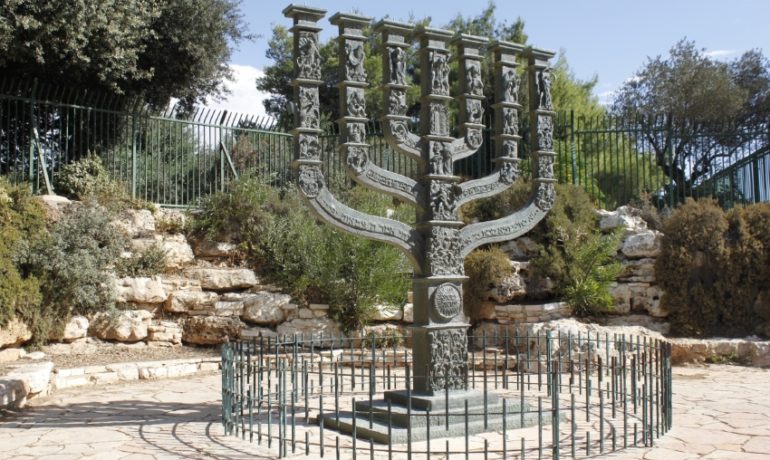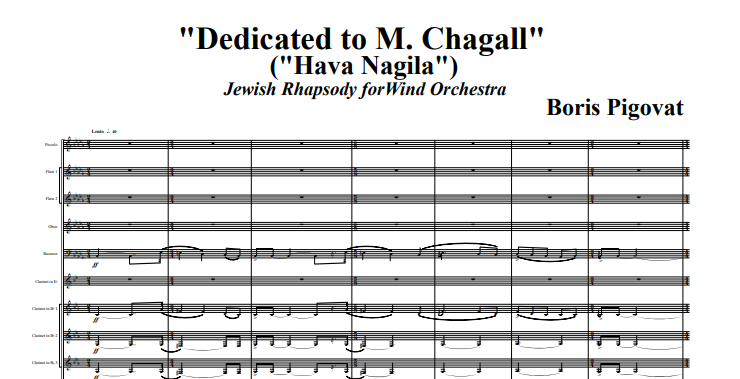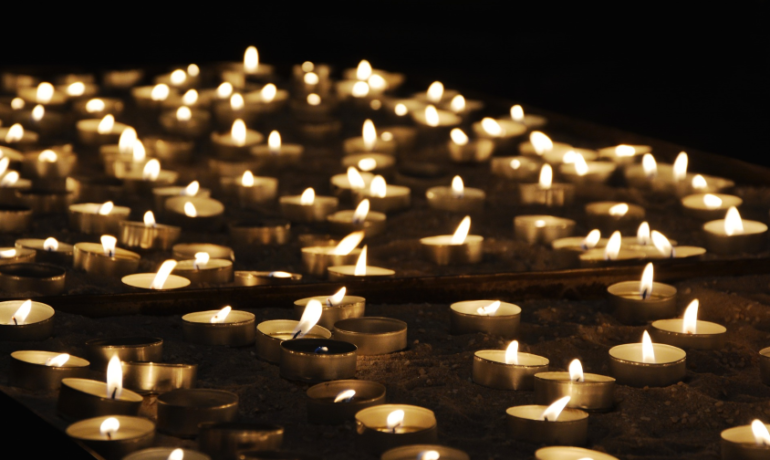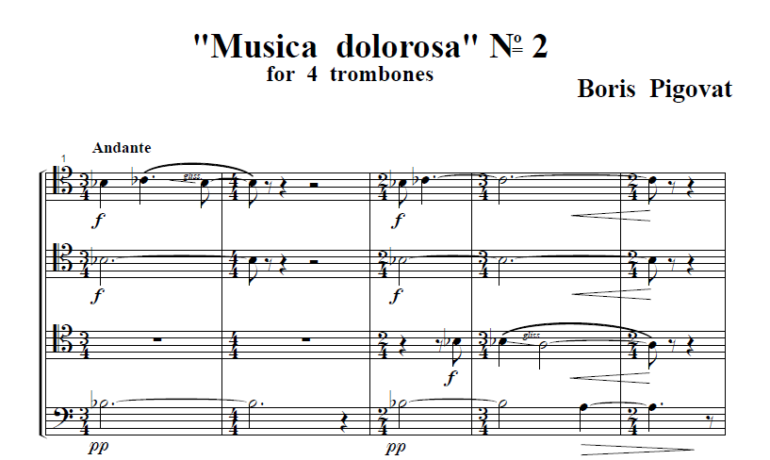
Tag: chamber ensembles


“Dedicated to Marc Chagall” (“Hava Nagila”)
Jewish Rhapsody for Wind Orchestra / String Orchestra (with Optional Piano) / Brass Ensemble / Saxophone Quartet / Solo Bayan
- Duration: ca. 9 minutes
My work Dedicated to Marc Chagall is based on the popular Jewish song Hava Nagila, which means Let us rejoice.
I had originally intended to write a rhapsody based on Hava Nagila, but I found myself writing episodes that were not derived from Hava Nagila. Suddenly, I realized that I was actually composing a tone poem, evoking scenes of a small Jewish town at the beginning of the 20th century. Such images and moods typify novels by Shalom Aleichem and the earlier paintings by Marc Chagall. I felt a particularly strong association to Chagall’s pictures. For this reason, I named the piece Dedicated to Marc Chagall, in addition to the secondary title of Jewish Rhapsody “Hava Nagila”.
I composed the piece in 2003, for wind orchestra, and then for string orchestra (with optional piano). The main part of both versions is similar, but the nature of strings required a completely different introduction for the string version.
The wind orchestra version premiered in 2003, performed by the Petach-Tikva Conservatoire Symphonic Band at Festival Kfar-Saba (in Israel), and conducted by Michael Delman.
The premiere of the string-orchestra was in 2005, performed by the Ramat Gan Chamber Orchestra (in Israel), and conducted by Aviv Ron.
Later, both versions were performed many times in Israel and around the world.
In 2015, the wind-orchestra version was also performed at the WASBE Conference in San Jose, California, by the Israel Youth Wind Orchestra, conducted by Motti Miron. Unfortunately, I don’t have a recording of that performance. However, below is the recording of a different performance of theirs, in Israel, in 2012:
In 2005, I was contacted by the Brandt-Brass Ensemble from Saratov, Russia. They sough a challenging piece to perform for international competition, and I prepared for them a version of Dedicated to Marc Chagall for brass ensemble.
In 2015, I also prepared a version for saxophone quartet; below is recording of that version performed by the Mestizo Saxophone Quartet, in 2018:
In 2012, I received an unexpected application from Ukrainian accordionist Pavel Fenyuk, asking for my permission to write an arrangement of the piece for solo bayan (chromatic button accordion). Below, is his virtuoso performance of that version:
The piece has already seen many variations, and who knows where else it will go?

Prayer (1994-1995)
- Duration: ca. 6 minutes
I composed Prayer for Viola and Piano in 1994, after completing the third part of the Holocaust Requiem for Viola and Symphony Orchestra, Lacrimosa. I then collected materials for the fourth part of Requiem, Lux Aeterna. Therefore, Prayer is stylistically very similar to Requiem, and especially to Lux Aeterna. I even used one of the themes from Requiem: “Shema Yisrael”.
The “Shema Yisrael” theme opens and concludes Lux Aeterna. Hence, the best way to understand my expression of Prayer is by first listening to the Requiem recording, or at least to Lux Aeterna.
In 1995 I prepared the version of Prayer for Violin and Piano. In 2004, this version premiered in Carnegie Hall, in New York, performed by Carmit Zori (violin) and Gilbert Kalish (piano).
In 2010, the version Prayer for Viola and Piano was included in the “Requiem” CD launched by Atoll, performed by Donald Maurice (viola) and Richard Mapp (piano).
Both versions were published by the Israel Music Center – Music Publishing.
Below are recordings of two more great performances of both versions: by Gilad Karni (viola) and Anna Keiserman (piano), and by Litsa Tunnah (violin) and Petr Limonov (piano).
Version for Viola and Piano
Version for Violin and Piano

Musica Dolorosa No. 2 For Trombone Quartet (1988)
- Duration: ca. 9 minutes
When I decided to write a piece for Trombone Quartet, I asked for advice from Prof. Yuri Alexandrovich Fortunatov. Although I already very familiar the capabilities of the trombone, I expected that Professor Fortunatov would advise me something nove. He told me:
Forget that you are writing for trombones. Write a piece for Cello quartet, and then give it to trombones to perform.
That paradoxal advice opened my mind and I explored new possibilities that I could otherwise not have imagined!
In 1988, the piece was completed, and I was awarded a Special Distinction Diploma for it at the International Composers’ Competition in Budapest. In 1989, the piece was premiered by the Hungarian F. List Music Academia Trombone Quartet, in Barch.
Much later, the piece was published by the Israel Music Center – Music Publishing.
Below is the recording from the premiere at Barch in 1989.
F. List Music Academia Trombone Quartet
Barch, Hungary
1989